Thunder Fighter Mock-up
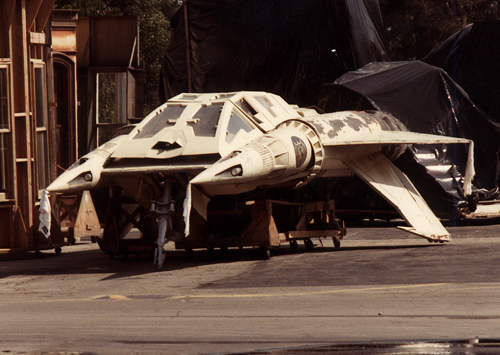
The Thunder Fighter Full Scale Mock-up
Thunder Fighter Mock-up

The Thunder Fighter Full Scale Mock-up
 |
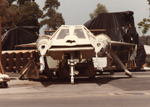 |
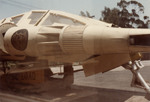 |
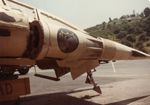 |
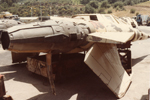 |
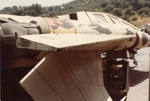 |
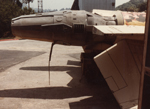 |
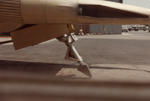 |
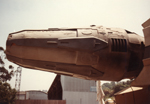 |
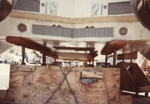 |
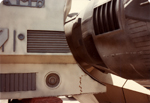 |
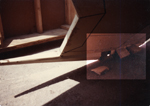 |
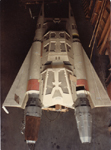 |
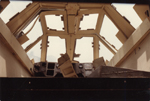 |
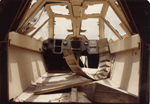 |
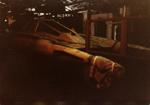 |
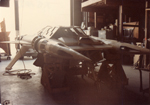 |
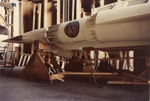 |
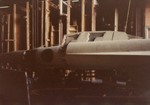 |
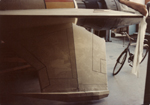 |
The full scale studio mock-up was built largely of plywood with some metal detail components. Inside the shell were hoses to direct steam to various points as well as hydraulic lines to side back the heavy metal canopy. At first it was built as a two-place fighter (fore and aft seat arrangement) but later in the series a second, interchangeable, forward fuselage was built which featured four seats. This allowed for two different type variants to be depicted as well as offering the opportunity to show two vehicles at the same time. The Director could position the incomplete front portion of one extending into the frame with the other complete version in some other part of the frame. Both the two place fighter (photo) and the four place version (photo) featured complete interiors with full instrumentation. This is one of the very few instances where an interior set was actually built inside the exterior. Normally the interior set is built larger than would be allowed if it were actually going to fit the exterior. This is as true for buildings as it is for spacecraft or submarines. The art Directors know that the audience has no real means of assessing the relative sizes so they can save some money by making exteriors a bit smaller. It is also well known in Hollywood that things appear larger on film than they do in real life which helps when it comes time to save money. Although made mostly of wood the Thunder Fighter also featured a unique construction method. The exhaust nozzles featured some long curved detail plates which extended from the front of the nozzle to the rear. Normally such a complex shape would be somewhat expensive to sculpt and cast as carefully fitting pieces. The studio craftsmen came up with a simple and cheap answer, they built the parts flat then cast them in rubber and glued the pieces to the nozzle. In one of the shots above you will see where one of these pieces has pulled away and is sagging down (photo).